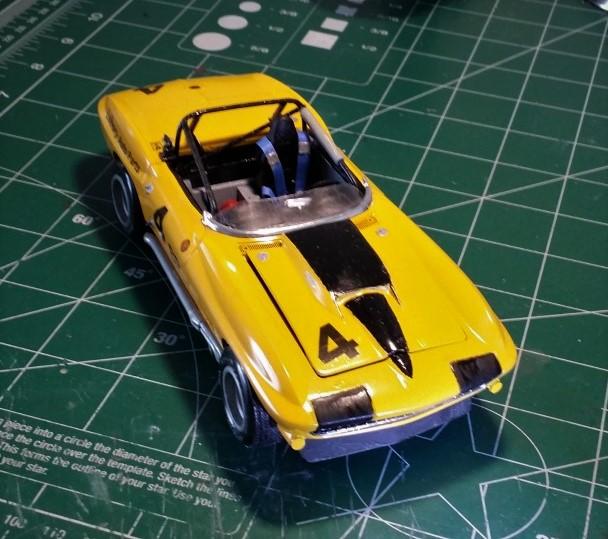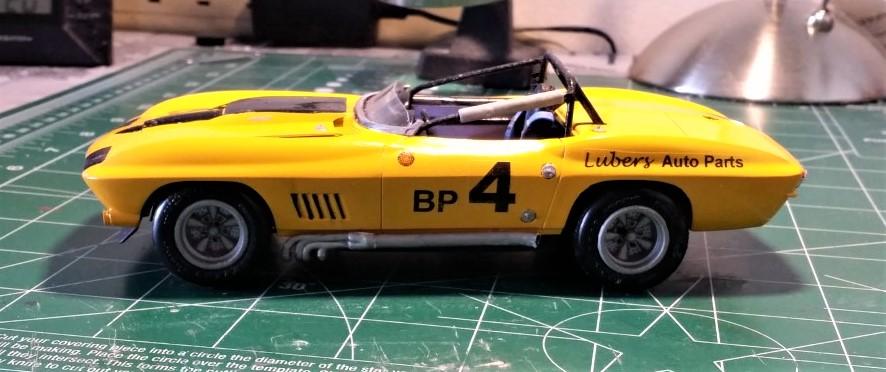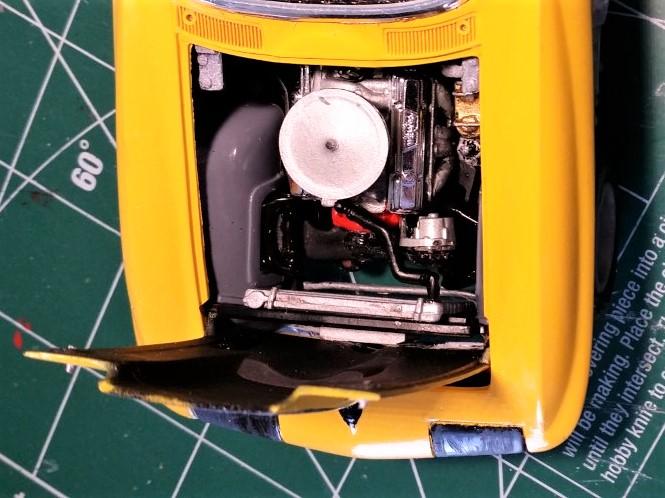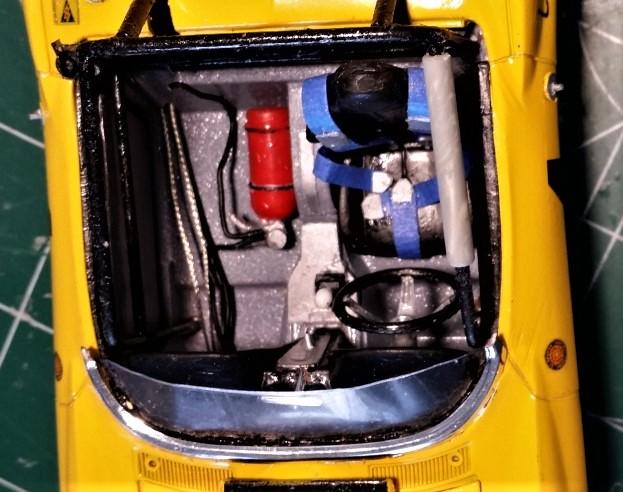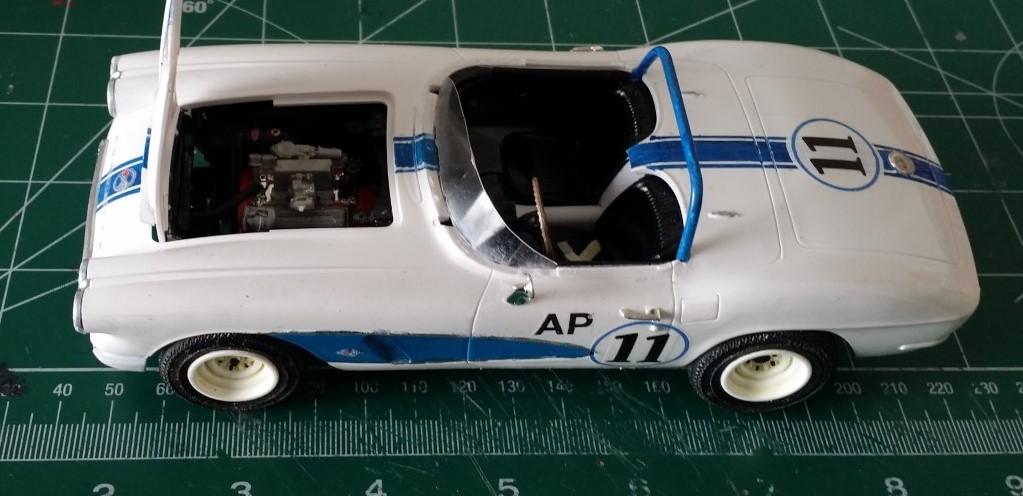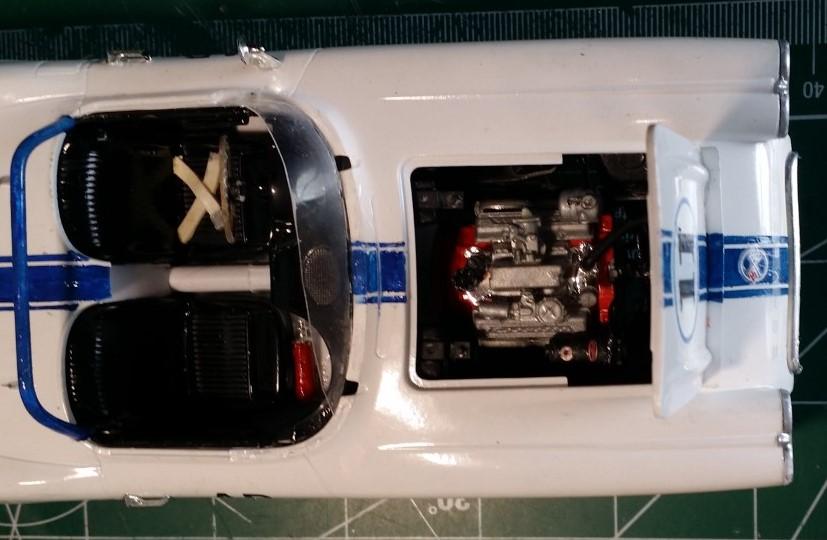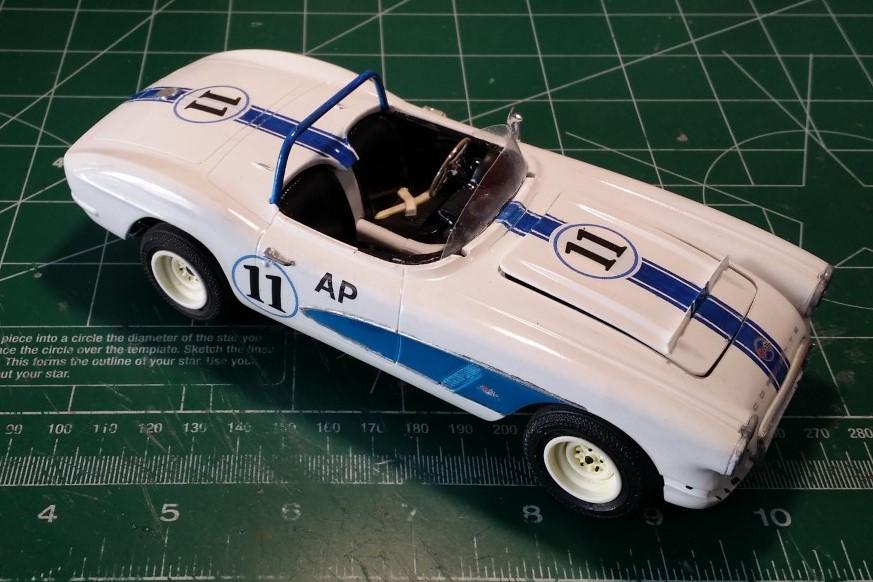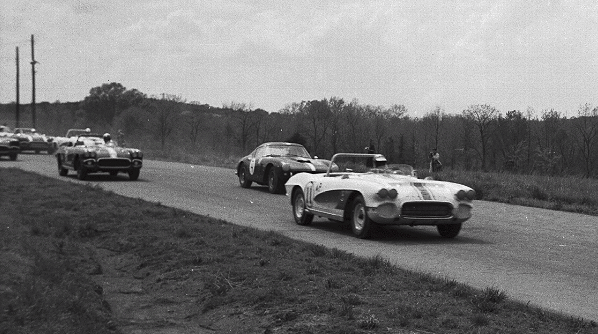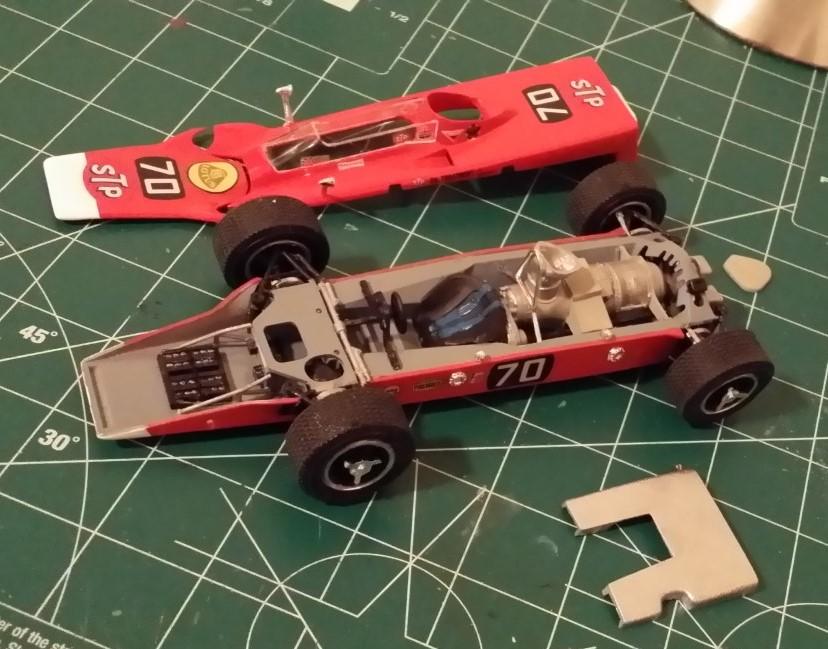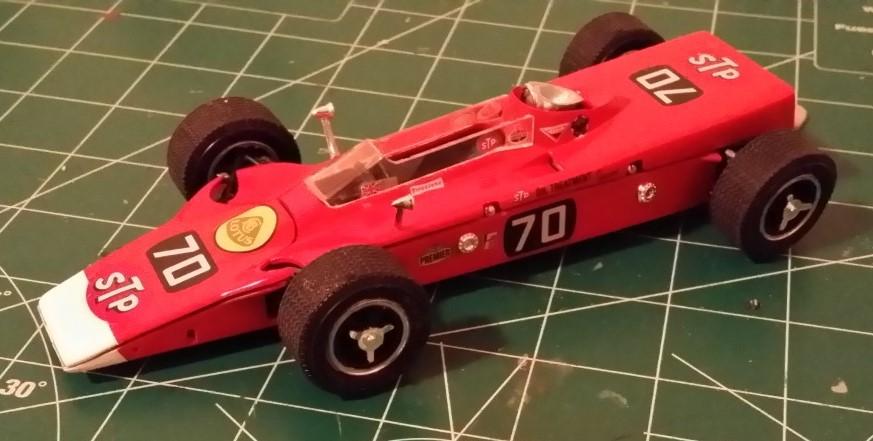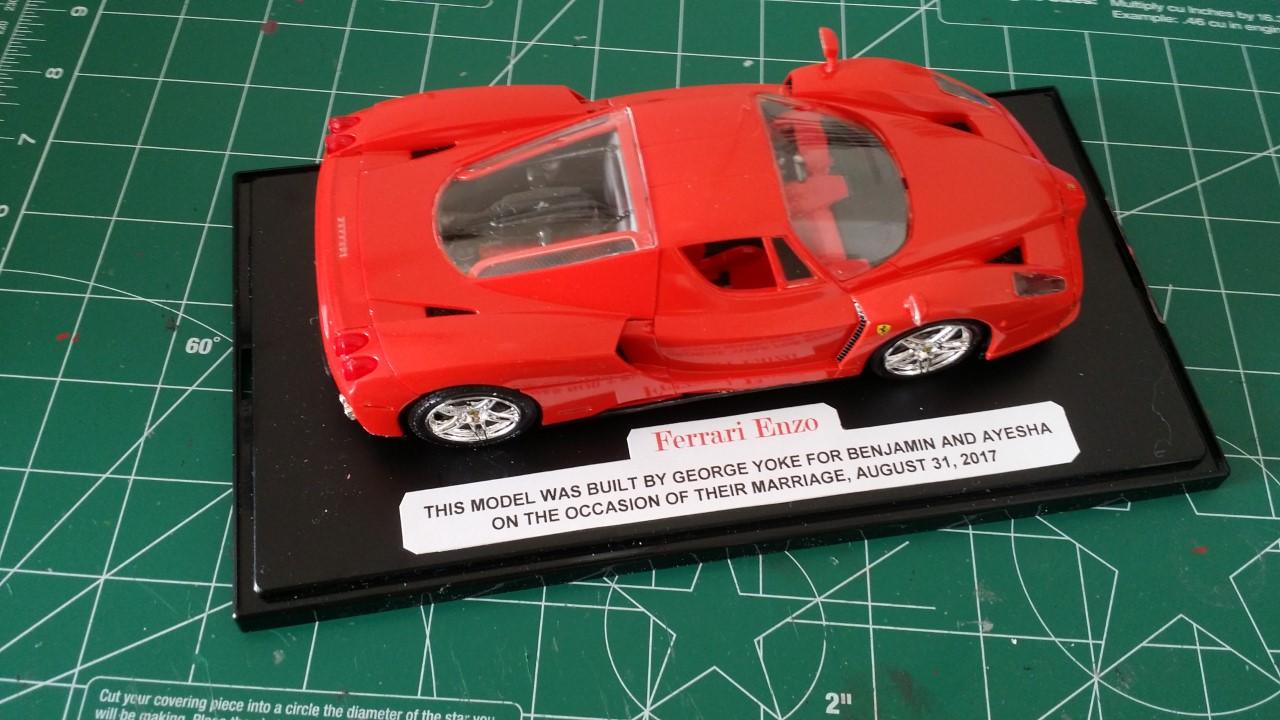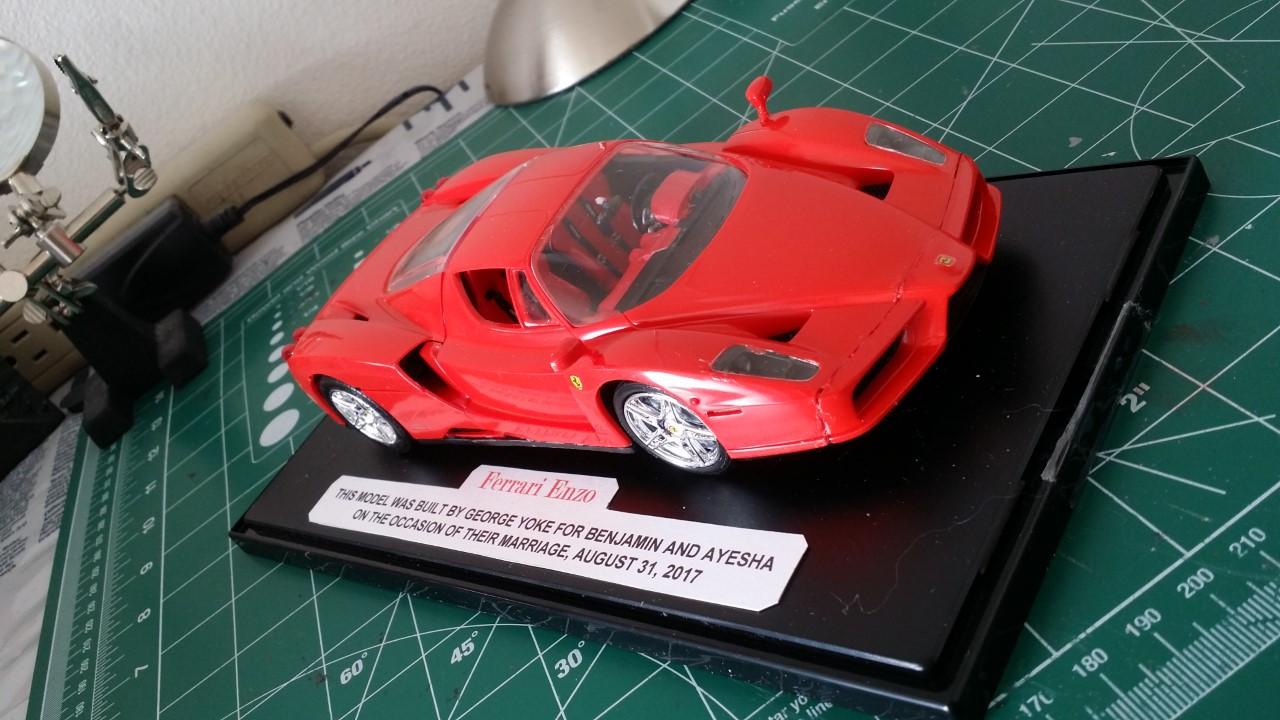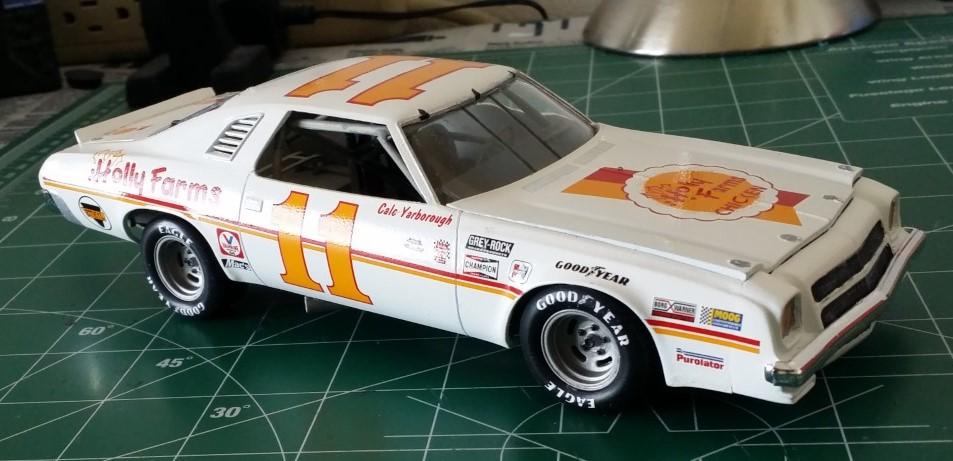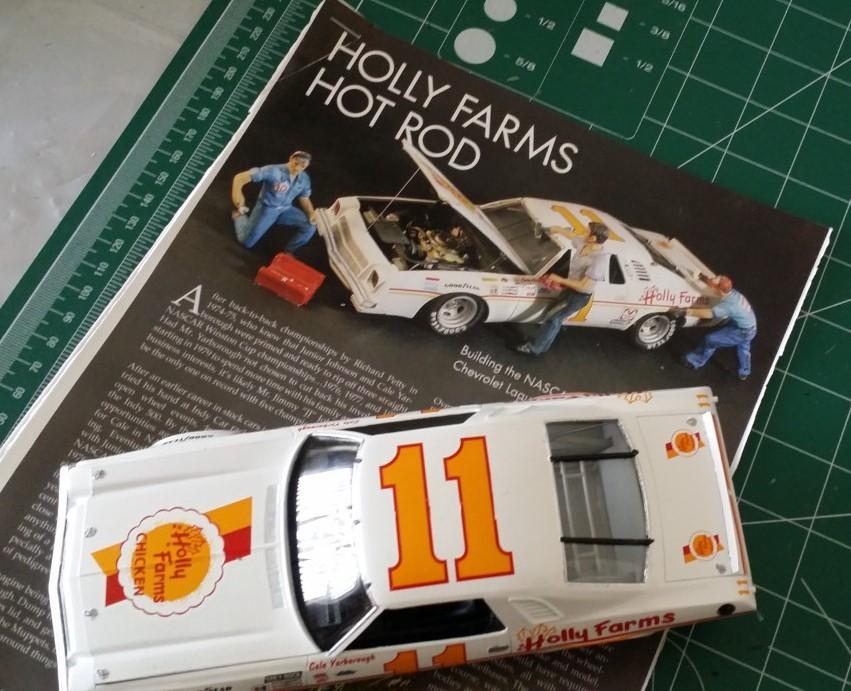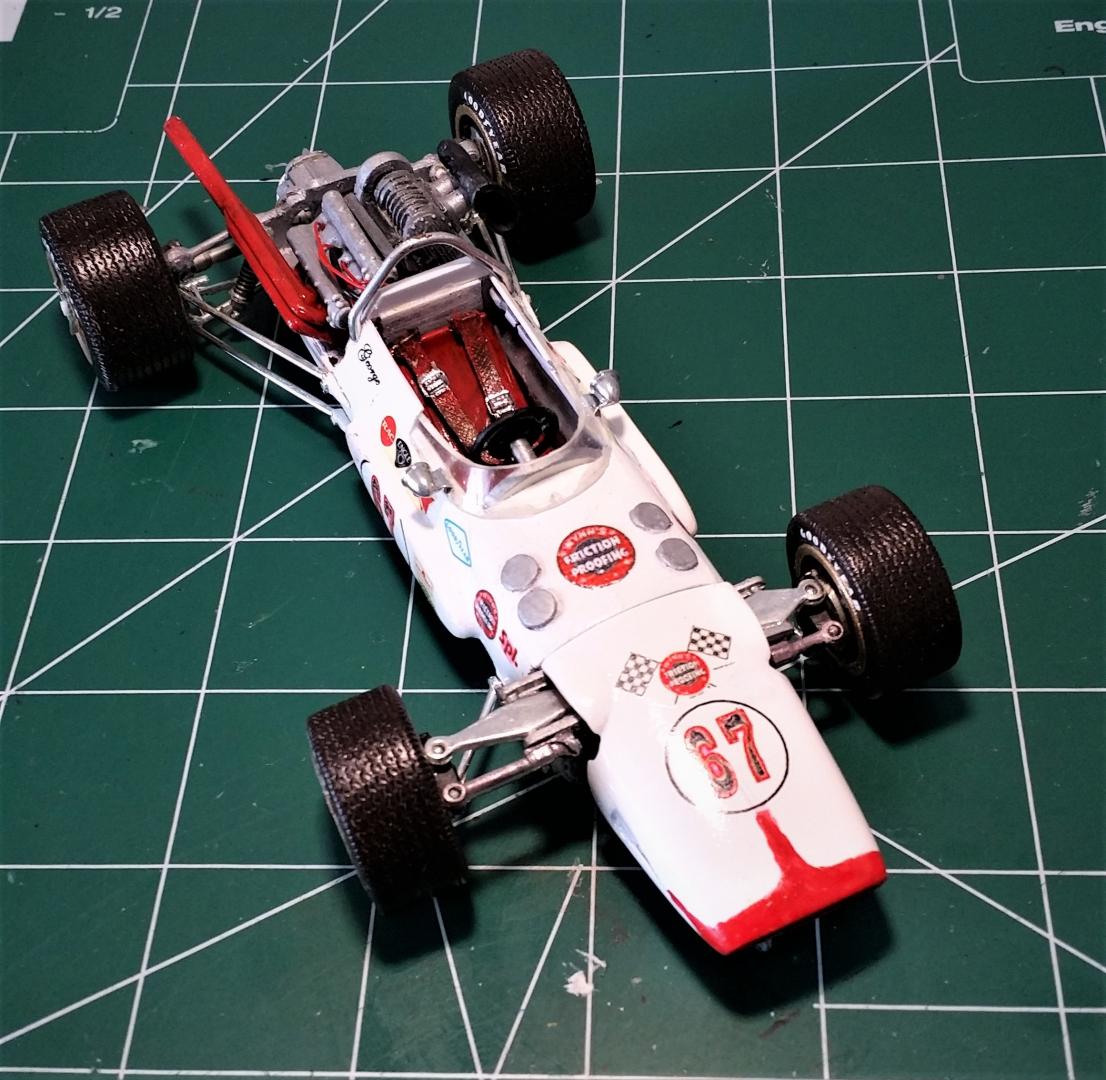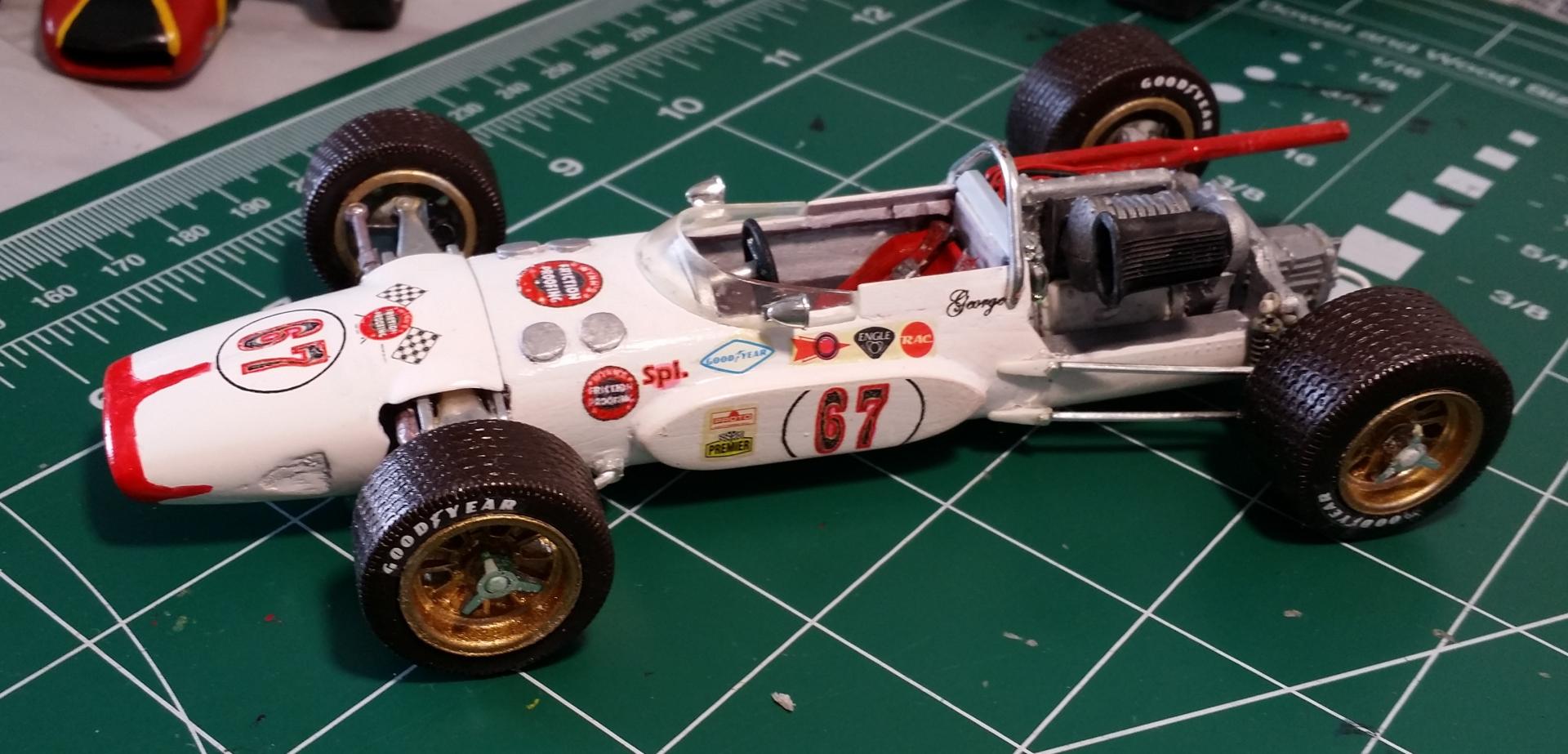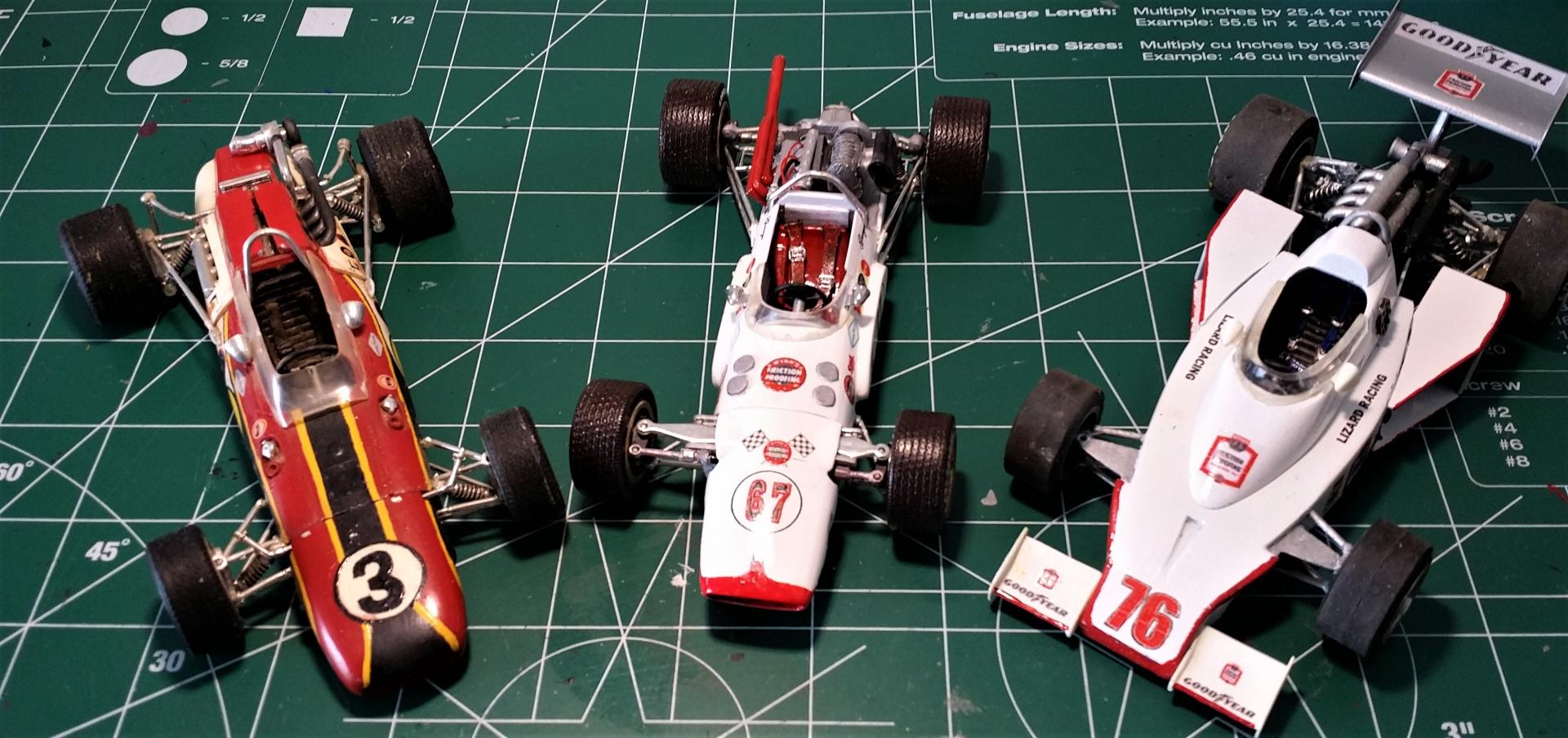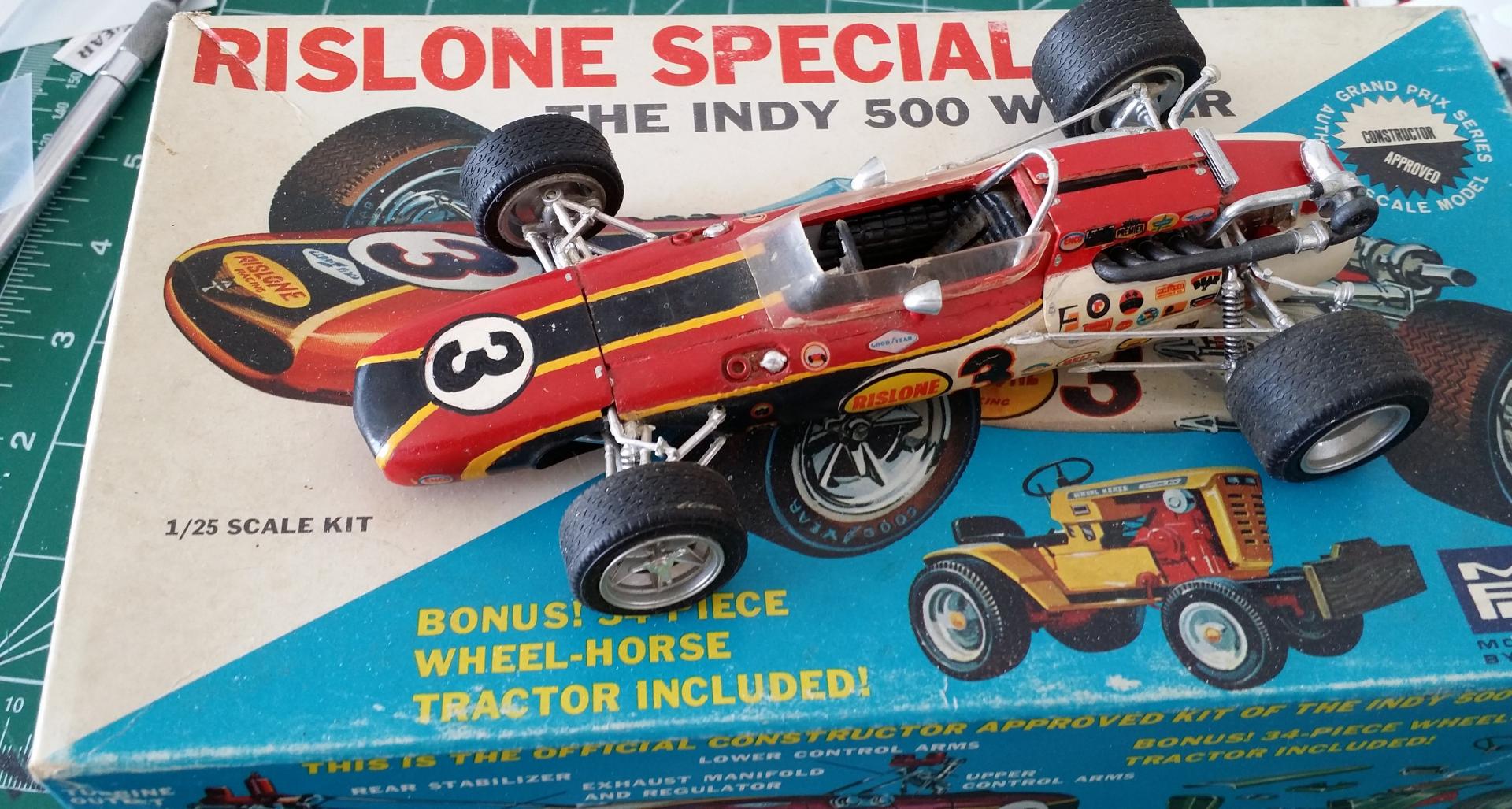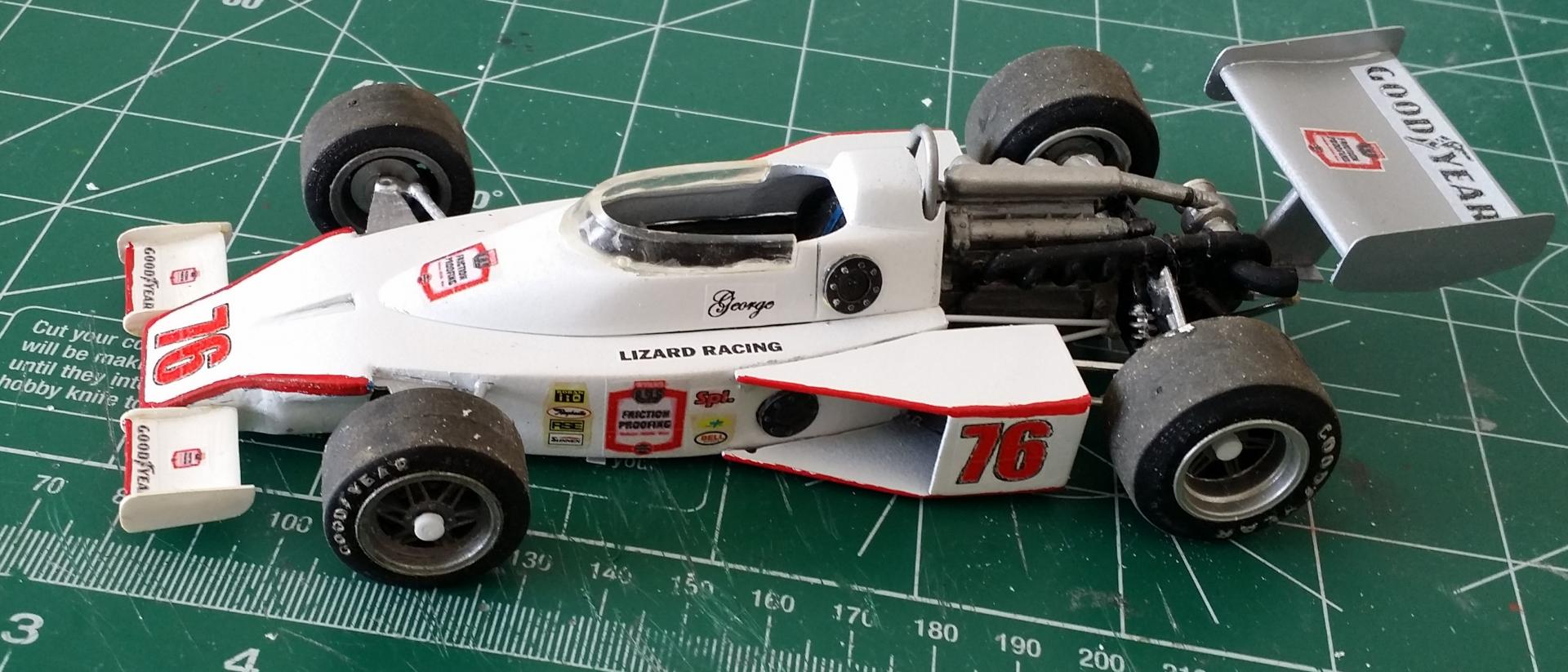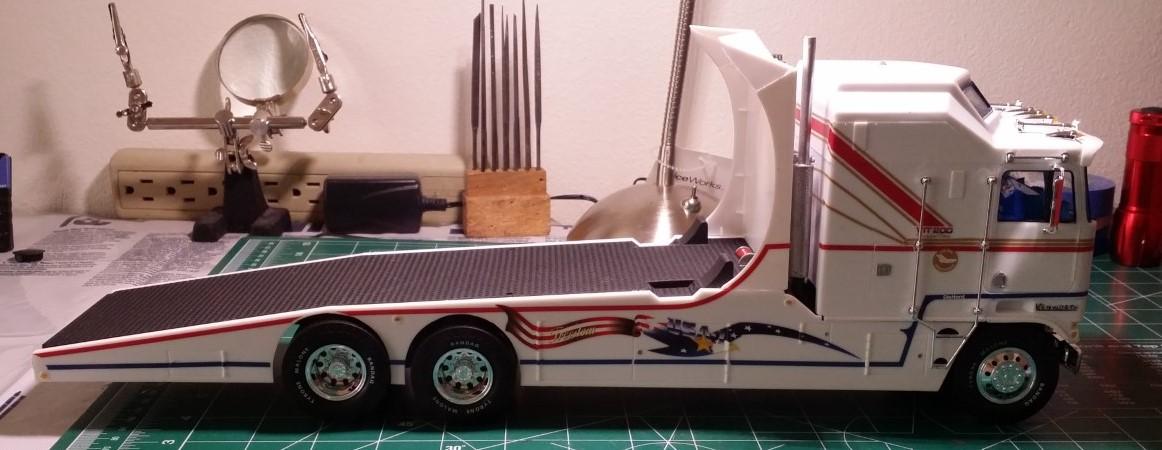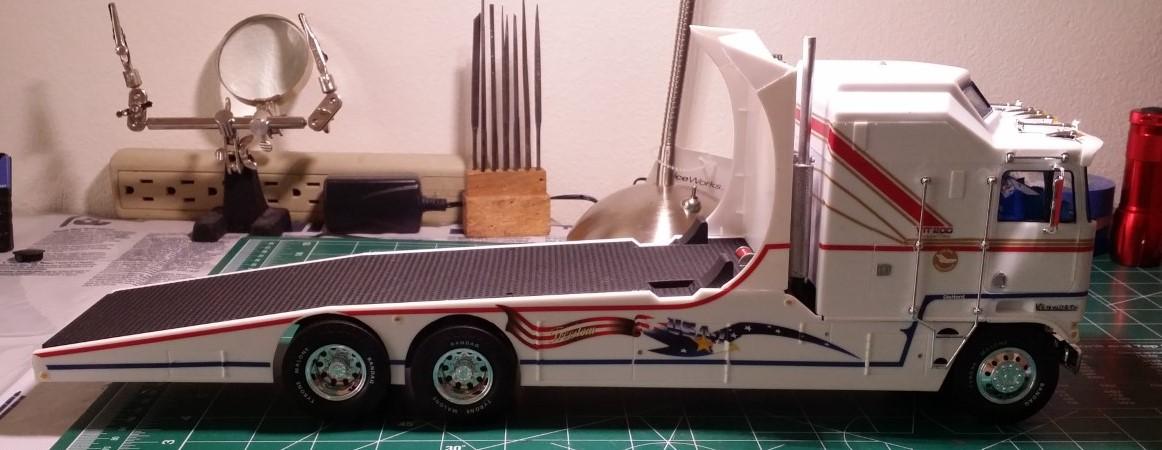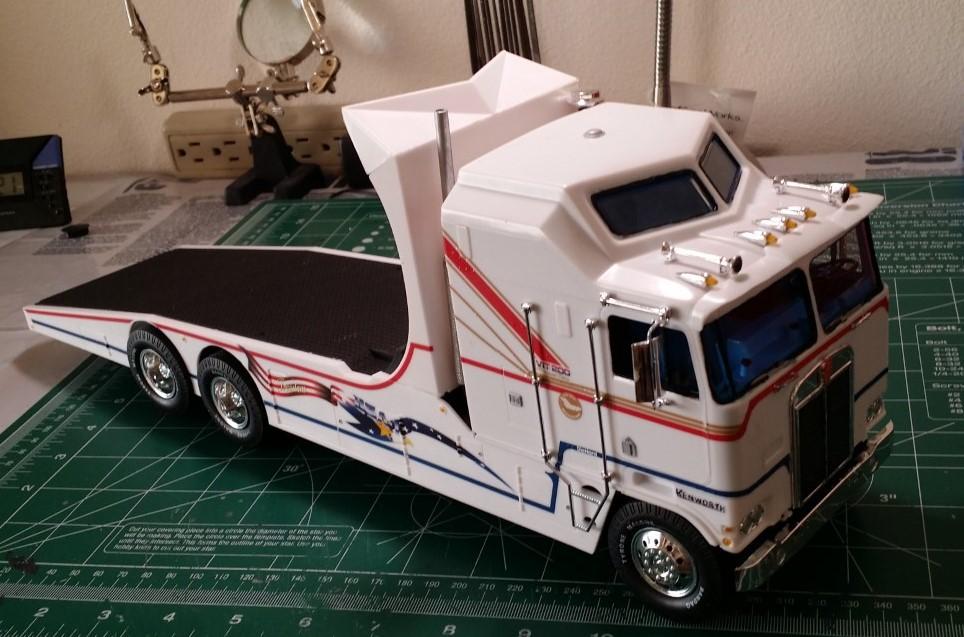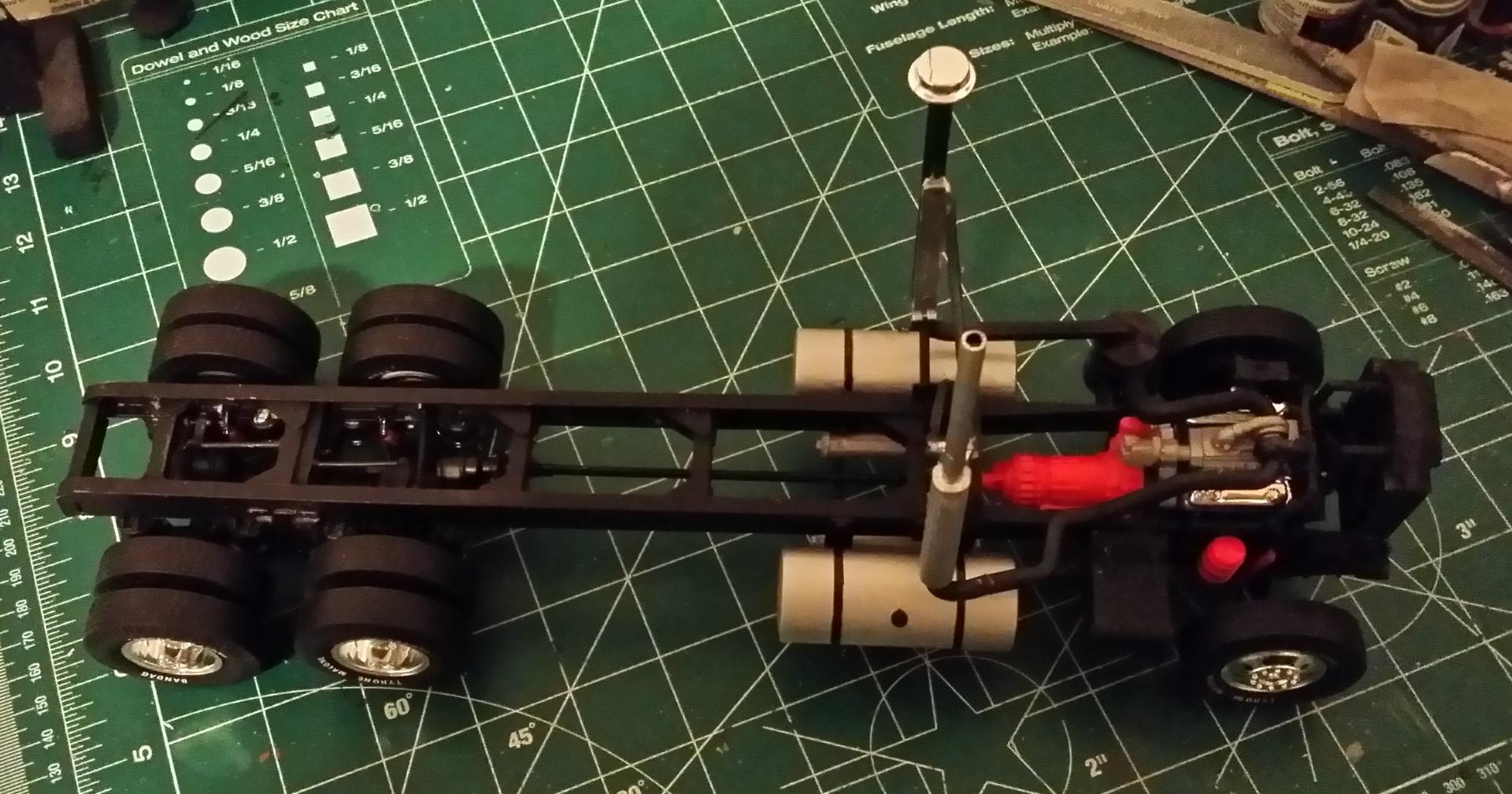-
Posts
653 -
Joined
-
Last visited
Content Type
Profiles
Forums
Events
Gallery
Everything posted by Lizard Racing
-
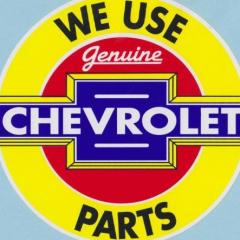
Engine wiring question
Lizard Racing replied to DanR's topic in General Automotive Talk (Trucks and Cars)
Be sure to do some research on the engine you are wiring. Twin-cam engines have their spark plugs between the cams. Pushrod V8s usually have theirs along the lower edge of the head. Some V8s route the wires directly to the plugs over the valve covers (big block Chevy), while others route theirs underneath the exhaust and reach the plugs from below (small block Chevy). It all depends on the engine in question. Fortunately, there are plenty of pictures available. Enjoy! -

My New Years Modeling Resolution
Lizard Racing replied to Renegade's topic in General Automotive Talk (Trucks and Cars)
I know just how you feel. I have to fight the impulse to try and multi-task builds. If I had a 4 x 8 work table, maybe I could. -
When I was a tech inspector with the SCCA in the mid-'70s, I noticed there were still a lot of C2 Corvettes still running in the Production classes. Class A for the big blocks and Class B for the small blocks. This model is a tribute to those intrepid souls who raced these cars. This particular one is in Class B with the small block. Except for a local sponsor who might donate spark plugs or a set of tires, the cars were largely self-funded. They carried on despite a factory who didn't know nor care about racing successes. Even lowly British Leyland would give you $100-$200 if you won a national points race driving a Triumph or MG. This came from a Revell "67 kit. It fits well with good detail. And it had the 427 Stinger hood. Although the Stinger hood did not come on small-blocks, owners were permitted to install the cowl-induction hoods. The engine is from the AMT '63 kit with slots for the metal axle filled. Since the interior is exposed, it got more attention than it might have. I scratch-built a '70s legal roll bar. Note the mandated cutoff switch in the extreme upper left, the Big Donkey seat, fuel and fire extinguisher lines and blanked off dash. Thanks for looking and enduring my tirade.
-
Dr. Dick Thompson was a Washington, DC dentist and early Corvette racer. He won the SCCA 1962 A Production National Championship. His was the last Corvette championship before the dark days of Cobra domination. So this was naturally on my "to do" list. I started with the Revell '62 Corvette Special Edition kit. This is a good kit with lots of detail. For my purposes, the separate windshield and bumpers were a blessing. My only complaint was not having any open wheels. Wheels and tires are from the parts box. Roll bar and racing decals were self-made. The windscreen was made from some stiff plastic page protector. A Molotow liquid chrome pen was used to clean up the border around the side coves. I need more practice with this tool.
-
Nice build! I especially like the Viet Nam ribbon on the front plate. I believe the "latches" on the rear deck are brackets to hold the back of the convertible top when up. At any rate, the BMF is appropriate.
-
Very good work! I am considering this kit for Trans Am application. Is there a molded-in rear seat, or is it removable?
-
#70 was the first over 170 mph at Indy. I purchased this kit in a bag at a show. I didn't seem to have the fitment problems others had. It was a straightforward build. The body was left loose for display purposes. I did remove most of the solid center of the wheel backs so you can see through. Two major kit errors: It comes with Goodyear tires, but the decal and the real car had Firestones; Although the contingency stickers seem to have changed during the month of May, none of them matched what is in the kit. I had to use some from the stash.
-

Monogram's "Long John" dragster
Lizard Racing replied to spike morelli's topic in WIP: Drag Racing Models
I remember building one back in the early '60s. It looked good back then. OBTW, I believe the Potvin front-drive blower predates the top-mount. I have an old Hot Rod Magazine that has an article about blower drives. I think that is what it said. -
Another resource for the time is the book Go Like Hell by A. J. Baime. Miles and Ruby Won at Daytona and Sebring. Miles came within a car length of being the first to also win at Le Mans in the same year. Unfortunately, he was killed testing the 1967 car.
-
Nice detailing! I especially like the "bare" gray floor and leaving the stock door panels. According to the rules at the time, interiors could be gutted but had to have two seats and door panels..
-
The red engine with the orange "Fram" oil filter is a nice touch. I like the color.
-
I found this Revell kit at a thrift store, so bought it right away. A friend was getting married soon, so I thought of making this a wedding present (more for him). It is box stock and mounted in a display case with an inscription. I told my friend not to look at it too closely, as I am not a master modeler. But I'll bet they didn't get a gift like this. This is the first project I have given away. Hopefully it can get across the country intact!
-

Cale's Laguna
Lizard Racing replied to bbowser's topic in WIP: Stock Cars (NASCAR, Super Stock, Late Model, etc.)
Great build! Mine is in the "Cale's 75/76/77 below. I see you used the correct rear suspension and you got the hood to fit and still keep the nose down. Good work!!. -
Just finished the '75 version of Cale Yarborough's Chevy starting with the MPC Laguna kit with PPP wheels and tires. The MCM article was the inspiration for the project. It came out just OK. This article along with the one on the Randy Ayres forum were very helpful. It's just a shame to spend $20+ on a kit then need two extensive articles to make it look right. I haven't added the window net and am still working to get the hood to fit.
-

Hyundai Azera at port of entry customs 1/24 scale
Lizard Racing replied to Edward Gore's topic in Model Cars
What an unusual idea! I would think some personal knowledge and research was used to get the masking just right. -

The Beginnings Of Our Interstates
Lizard Racing replied to MrObsessive's topic in General Automotive Talk (Trucks and Cars)
In 1919 there was a bold experiment called the 1919 Motor Transport Corps convoy, which was one of the first crossings of the United States by truck. Commanding this expedition was then Brevet Lieutenant Colonel Dwight D. Eisenhower. This adventure, along with observing the Autobahn in Germany made him a champion for highways across the country. And the rest is history. -

How does your family deal?
Lizard Racing replied to Jeff31293's topic in General Automotive Talk (Trucks and Cars)
Growing up in the '60s my Dad, a Great Depression survivor, did not support my hobby. I think it was because he had to work as a youth to help support his family. When I got married, I made it clear my wife had to at least be tolerant. She didn't have to be rabid about it like I was, but at least tolerate. Now I have my own "craft room." It is important to be sure to allow your spouse to pursue his/her interests and activities. It's only fair. -
Here is a third Indy survivor that is a parts bin project. I have always been a fan of the supercharged Offy which ran in '66-'67 until overtaken by the turbo. The chassis is the AMT Lotus with the engine from the Watson roadster. Some of the parts are nearly 50 years old, since I built several variations of the Lotus back in the day. Tires are from Indycals. Here are all three Indy cars I was working on at the same time. Ten years of Indy car development. I think I'm going to do something simple next. Thanks for viewing.
-
Here are two old Indy cars recently resurrected from storage. I built the '68 Eagle in 1972. It came straight out of 30+ years of storage. I even have the original box! The paint is a bit dirty and the decals faded. I did manage to wash off the dust. The McLaren was always a fantasy car and was recently rebuilt and repainted. It reflects a '74 McLaren but changed and updated in a subsequent year (pre-Cosworth). There's nothing older than last year's race car.
-
Welcome to the world of retiree modelers! I retired two years ago and since have acquired enough builds/rebuilds to last me a year of full-time work. Just don't get busier than when you were working. This forum is a great place for advise and help. As I remember, the '62 Darts had a unitized body/chassis. Are you looking to separate the drive train from the chassis plate? For more exposure, post this message in the On the Workbench section.
-

2016 Builds...Let's See 'Em....
Lizard Racing replied to kilrathy10's topic in Model Trucks: Big Rigs and Heavy Equipment
Here's mine, just finished. It started as a Papa Truck, Kenworth Aerodyne with some changes. This is my first big rig after building race cars for years. It attracted my attention because it is a race car hauler and you don't see many cabovers any more. It is featured in the on the workbench and under glass sections. -
This is the finished project noted in the On the Workbench section. I am not creative enough to come up with a special paint job, so I left it white and modified the kit decals to remove the Papa Truck designation. I supplemented these decals with a side decal from the USA-1 '63 Corvette. Never throw anything away. OBTW, do any of you regulars know more about the Aerodyne with the extended frame? Was this a custom, or was it a separate Kenworth model?
-

The engine that rewrote F1 history
Lizard Racing replied to afx's topic in General Automotive Talk (Trucks and Cars)
It is the mark of a superior design to do not only what it was meant to do, but things it was not originally meant to do. The Cosworth DFV also won the Le Mans 24 hours and, in turbo form, won the Indy 500 several times. To the best of my recollection it is the only engine to do so. -

papa truck?
Lizard Racing replied to Lizard Racing's topic in WIP: Model Trucks: Big Rigs and Heavy Equipment
Here's the chassis completed. Obviously I'm not doing the Papa Truck. I couldn't get all the stacks to look right, so I fabricated a single exhaust and relocated the intake. This is probably not correct in the 1:1 world. One tip that you big rig regulars probably already know: Because of the long frame rails, be sure to check that they are not warped or twisted. I wish I had checked that BEFORE I assembled the chassis. Some tweaking will now be necessary. I'm still debating on the body color. Thanks for your attention. -

papa truck?
Lizard Racing replied to Lizard Racing's topic in WIP: Model Trucks: Big Rigs and Heavy Equipment
Yes, I remember from the instructions that the frame was gold and the engine white. I guess I've decided to make it into something else. Thanks for the comment.

